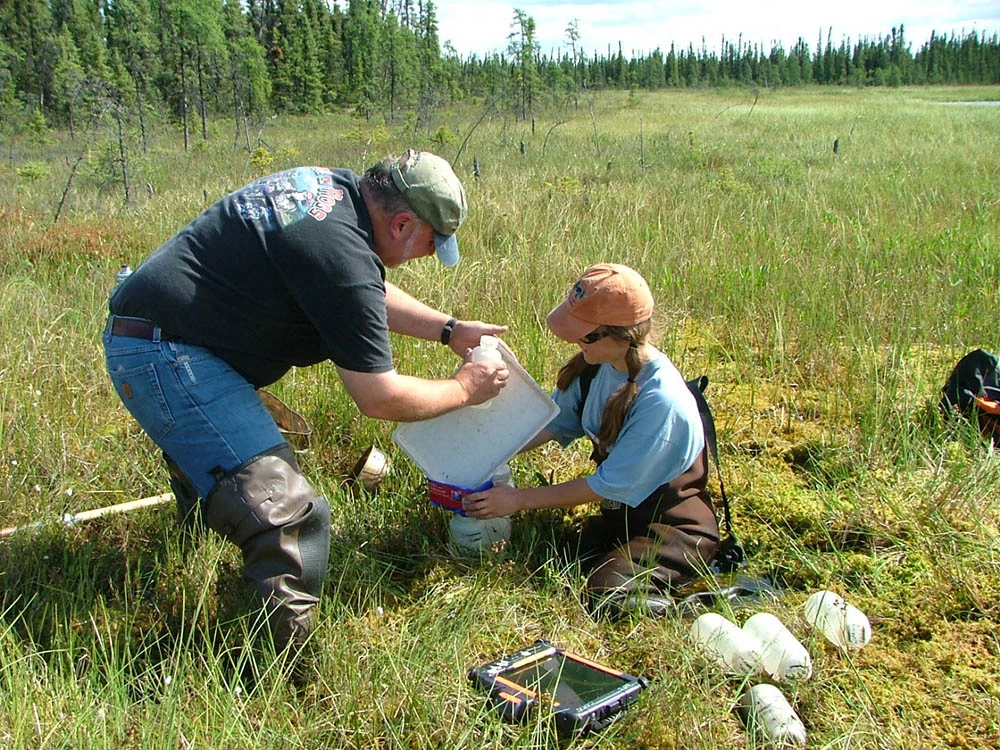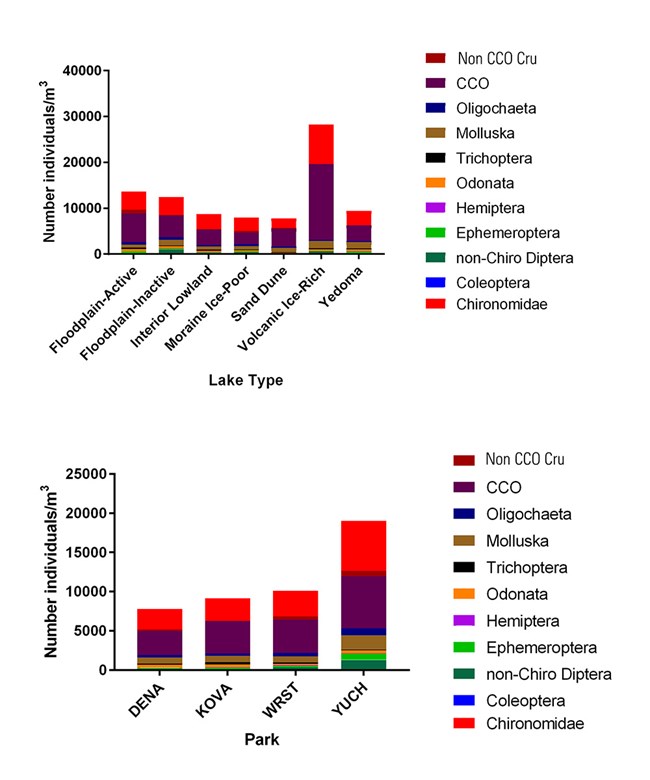Last updated: September 5, 2025
Article
Flies, midges, and dragonflies oh my!
Mike Cole, Cole Ecological, Inc.

Ken Barnes and Melanie Flamme processing a sediment sample collected from DENA-016 in 2007.

The Central Alaska Inventory & Monitoring Network was interested to know why birds choose one lake over another. To better understand this, scientists investigated where different types of insects and invertebrates live. Knowing this helps park managers protect important habitat, insuring migrants have a healthy place to feed and raise their young.
NPS scientists collected nearly 500 insect samples from lakes in 4 parks between 2004 and 2010. Based on this information, we learned that Yukon-Charley Rivers National Preserve supports the highest density of insects and other invertebrate taxa. This park is so productive because it has a much higher nutrient concentration compared to other parks that were investigated. The lakes also had a higher calcium concentration, which makes the nutrients more available. This information, combined with population estimates on other animals, can help park managers protect important breeding and rearing habitat.
The influence of catchment characteristics and water chemistry on invertebrate community composition in ponds and lakes in subarctic Alaska
Abstract
-
Predicting the impacts of climate change on aquatic ecosystems in the Subarctic is challenging due to the presence of permafrost and the wide range of geomorphologic conditions found across this heterogeneous landscape. To accurately predict how fish and wildlife will be impacted by climate change, it is critical to identify the habitat requirements of important prey such as macroinvertebrates.
-
To better understand spatial heterogeneity in macroinvertebrate populations and identify key habitat requirements, we compared taxonomic richness, relative abundance, and density of macroinvertebrate populations in seven different lake basin types, spanning a large latitudinal and elevational gradient of subarctic Alaska. We used nonparametric statistics and NMDS to relate macroinvertebrate community metrics to landscape characteristics such as sedimentary deposit type, permafrost extent, geomorphology, and lake basin type, as well as chemical conditions within the lakes.
-
Macroinvertebrate richness was highest in areas with continuous permafrost, largely driven by richness in dipterans. Lake water chemistry influenced taxa richness, relative abundance, and densities of both macroinvertebrates and microcrustaceans. Invertebrate densities were greatest in regions (parks) with higher nutrient concentrations and specific conductance, with higher relative abundance of dipterans in older landscape terrains (Yedoma) while a higher relative abundance of microcrustaceans was found in landscapes with little peat accumulation (sand dunes).
-
As climate-driven permafrost thaw continues across the subarctic, shifts in pH, specific conductance, and calcium are likely to occur due to changes in active layer thickness and surface and groundwater flow paths that drive nutrient and solute delivery. Changes in invertebrate relative abundance and density are most likely to occur in ETOC and Diptera, two of the most ecologically important invertebrate groups found in subarctic lakes.
Larsen, A. S., M. Cole, D. L. Rupp, and T. Simmons. 2025. The influence of catchment characteristics and water chemistry on invertebrate community composition in ponds and lakes in subarctic Alaska. Freshwater Biology 70(4): e70024.
